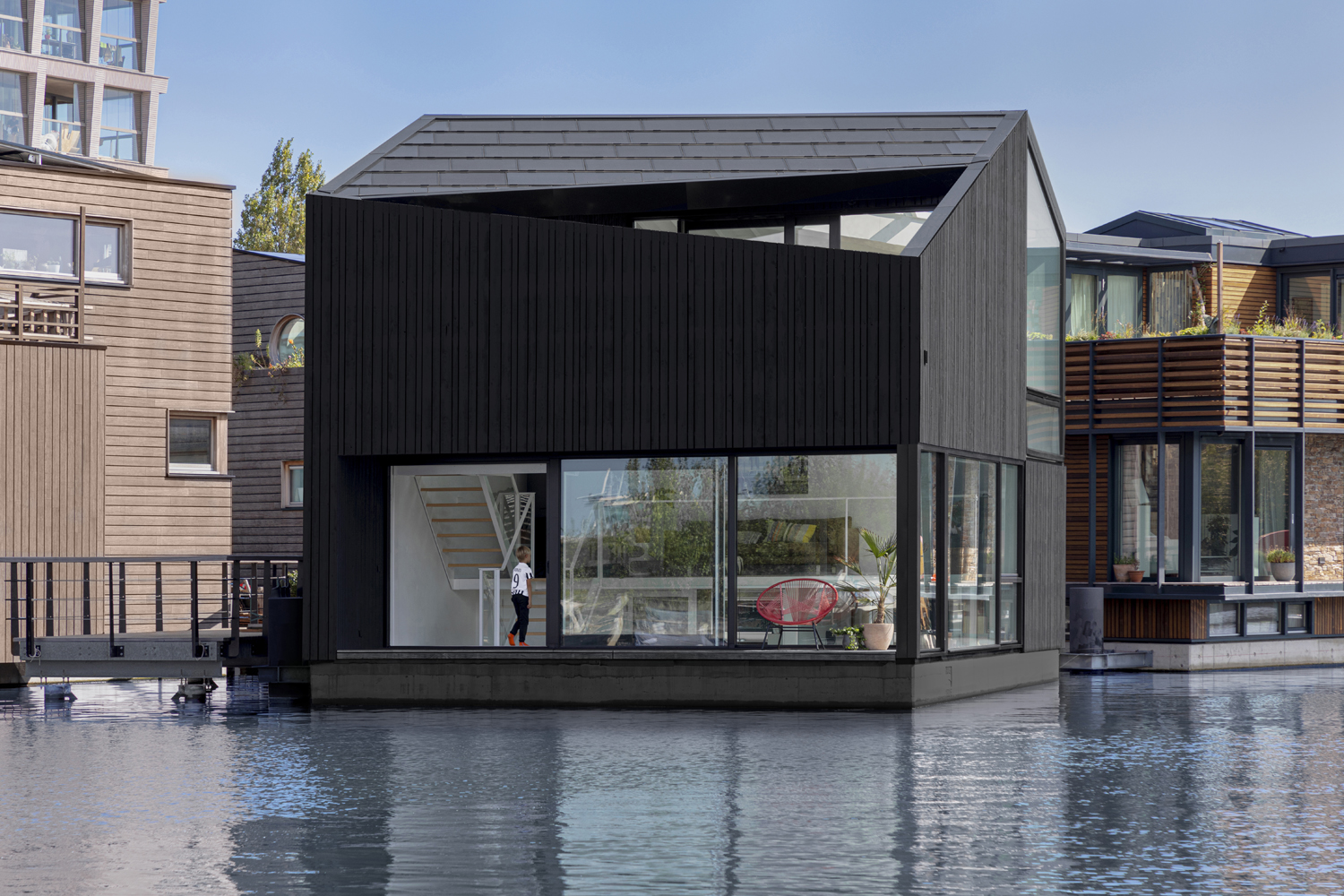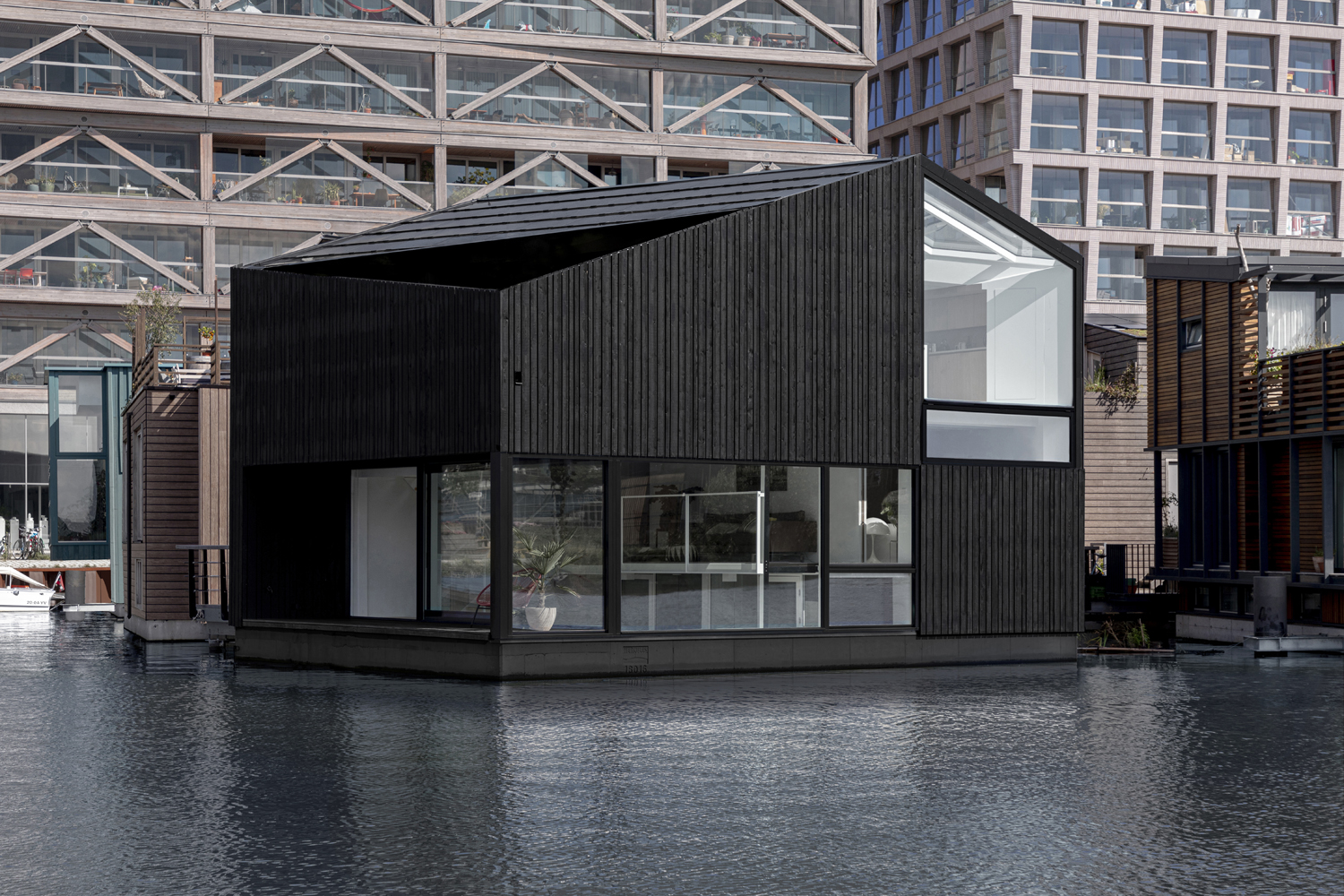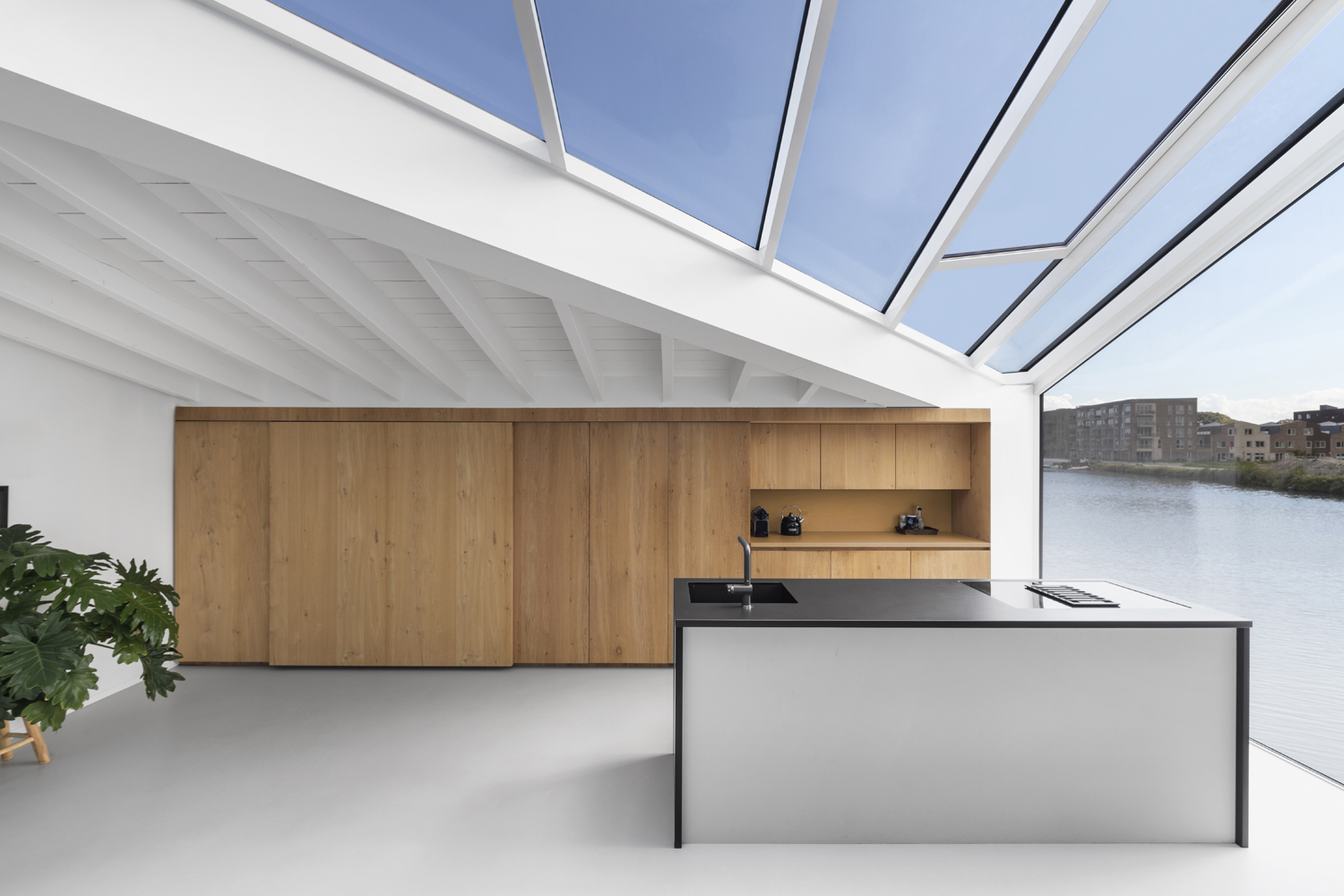Floating Home is part of Schoonschip, a new floating village of 46 households that aims to create Europe’s most sustainable floating community in North Amsterdam. Based on a sustainable urban design plan by Space&Matter and Metabolic, over 100 residents moved into and revitalized a disused canal and established themselves a living on the water.

The location has a strong industrial past but today it is one of the most rapid changing city parts of Amsterdam transforming into a more multi functional living area. The new floating neighborhood is intended to be an urban ecosystem embedded within the fabric of the city: making full use of ambient energy and water for use and re-use, cycling nutrients and minimizing waste, and creating space for natural biodiversity.

The site is energy self-sufficient, employs circular building practices and serves as a showcase for sustainable living. A smart jetty connects the 46 floating households with each other and the quay. On the top surface, the jetty is a social connector where people meet. Down below the surface, the jetty is a functional and sustainable connector with all the energy, waste and water lines attached to every household connected together.

Within the smart grid of the village and the given boundaries of every water plot, every single home is able to be unique in architecture and interior design. All inhabitants were allowed to choose their own preferred architect.

Our client asked us to design a home which would maximize the space within the volume boundaries of the plot and still have a typical yet surprising house shape. The floating volume has a pitched roof, but the coping of the roof is turned diagonal in the floor plan which gives an optimization in usable space on the inside and an outspoken architectural design on the outside.

Architecture and interior designs are always intertwined and connected on each level to make a clear and unified experience. The floating home exterior design is the result of a space extensional study within the interior and vice versa. All areas are in open connection to the atrium which comprises three floors.
The layout is extended with a split level connection to a loggia terrace just above water level. The interior and facade play with the views on the outside. Views appear and disappear while moving through the home. The basement offers direct water level views, the living room only gives a view on the surroundings when sitting in the lounge and the kitchen on the top floor has directed views towards the south and north side of the canal. On the top floor, a cut out of the roof enables a loggia and open terrace with a view towards the harbor in the west.

With simple yet smart interventions this project is realized on a tight budget but still has a unified architecture and interior design that leaves a strong impression. At the same time the floating home is extremely energy efficient, eco-friendly, and built with a small footprint. Sustainability goes even to a higher level with the implementation in the smart grid of the floating village. Energy can be even more valuable when you share it.

Project info:
Client: Privé
Architecture design & interior design: i29 Architects (Jeroen Dellensen, Jaspar Jansen en Chris Collaris)
Structural engineer: Bartels en Vedder
Contractor: Hagoort Bouw B.V.
Carpenter: Simon Sintenie
Urban design plan and sustainability design: Space & Matter, Metabolic
Copyright images: Ewout Huibers





























